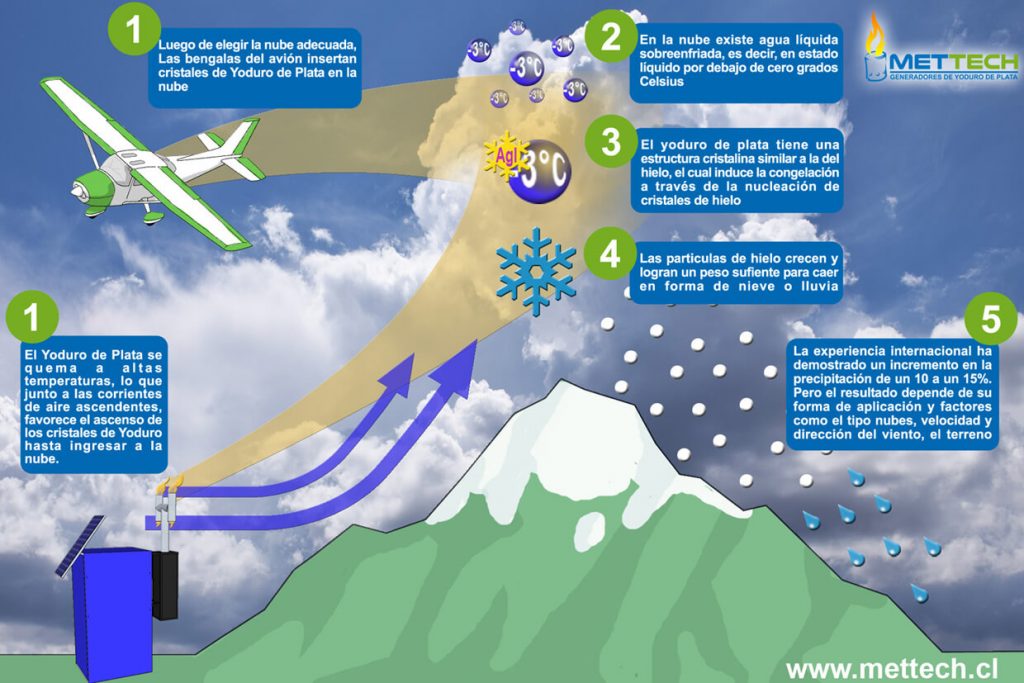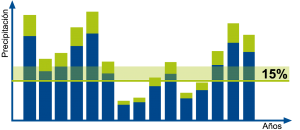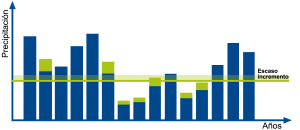Operation Methodologies

There are several methods to introduce the nucleant in the cloudiness, being the most known and used a system of “Terrestrial Generators” and the “Aerial Seeding”. Both systems present their respective advantages and disadvantages, which will be detailed below:
The air system ensures 100% introduction of the nucleant in the cloud. Its main disadvantages are the high cost, the risk of the operation and the restricted area that can be covered. It is expensive to use aerial material on the one hand and the need for support from a weather radar on the other, to determine which areas within the cloud cover contain an adequate amount of supercooled water.
The terrestrial system does not ensure that the entire nucleant enters the cloud cover, and a small percentage can be lost in the path. Although it requires an initial cost of implementation of the network, when it is definitively installed, the cost of operation is several times lower than the air system. It is useful for both large and small areas and does not require a sophisticated equipment as radar, since it is not necessary to determine which sectors within the cloud band are the most appropriate, since the entire cloud band is sown and stimulated, either associated with a frontal system or other atmospheric phenomenon that generates precipitation.

Figure 3: shows the two types of systems: an airplane is flying over, inside or under the cloud and introduces the nucleant and with terrestrial generators. This task is also carried out, through a network of stations.
It is interesting to highlight one of the most relevant and positive characteristics of the system of terrestrial generators, and that is, once the network is installed in a region, it enters into “permanent” operation; This means it is usable in each and every one of the atmospheric situations that meet the conditions to be stimulated during the rainy season. Also, if deemed necessary, given the severity of a precipitation scarcity situation, it may operate at any time of the year, not necessarily in the rainy season, when an appropriate atmospheric condition to be stimulated occurs. On the contrary, the high costs of the air system always force to contract it by short periods, leaving important rainy events.
Regardless of the mode or system to be used, it is important to insist that the success of this technique lies in its continuity and permanence in time. If it is considered that stimulation of rainfall consists of generating an extra percentage of precipitation to which it will naturally fall, logically this extra amount of water will be proportional to the water that would naturally precipitate. According to this, in a “dry” year, namely, with little rain, the proportional amount that will be possible to obtain by means of the sowing of clouds will also be scarce. On the contrary, in a year with normal or abundant precipitation, the extra percentage to be obtained will also be considerable.
Within the large variability of the precipitation parameter, the permanent and continuous application of a stimulation program will result in dry years not being just as much, and that the extra percentages of rain that are obtained in rainy years serve as backup for future dry years, whether in the form of water reservoir, increase of groundwater, storage of snow in high peaks and, in general, all natural and artificial reserves that exist in the water system of a region. Graphic Nº 2 and Nº 3 support the information presented on the maintenance of an Stimulation Program:

Figure N° 2: The result of a regular and lasting Cloud Seed program in.

Figure N°3: Example of a Cloud Seed program used only during the dry years.
A program of precipitation stimulation for operational purposes, ie aimed at obtaining the largest possible amount of extra water, independent of the system and methods of checking the results thereof, should be applied in a permanent and continuous way, to effectively raise by approximately one 15% the pluviometric normal of the place (see Chart Nº 2). The pluviometric normals are calculated based on 30 years of measurements, a period long enough to absorb the marked natural variability of precipitation. Therefore, this period should be considered to effectively determine the increase in average precipitation in one place, under the effects of a continuous program of stimulation.
- Publicado por: Mettech
- April 24, 2018
